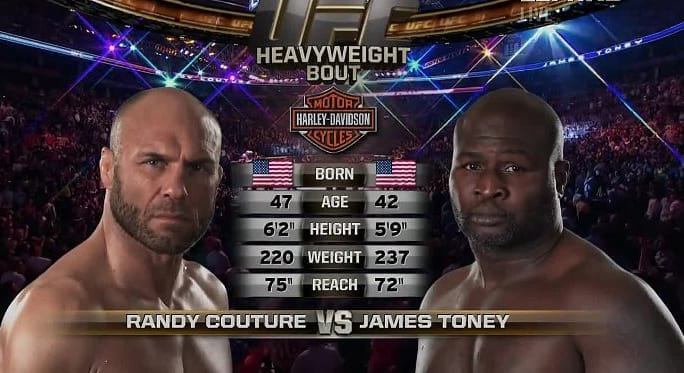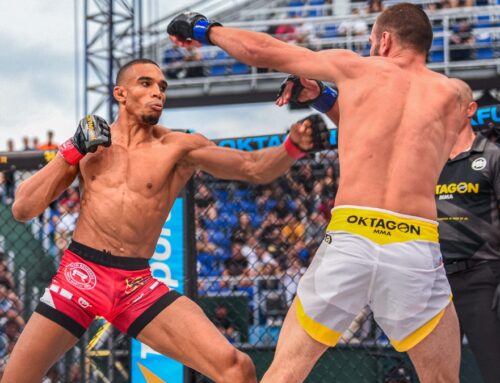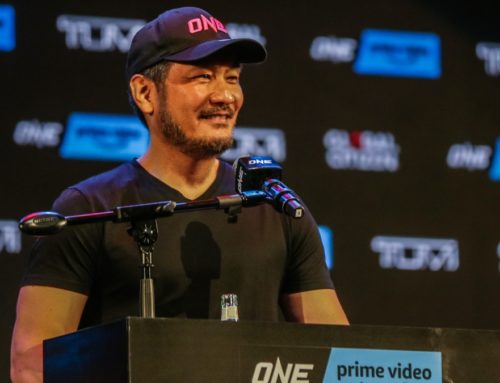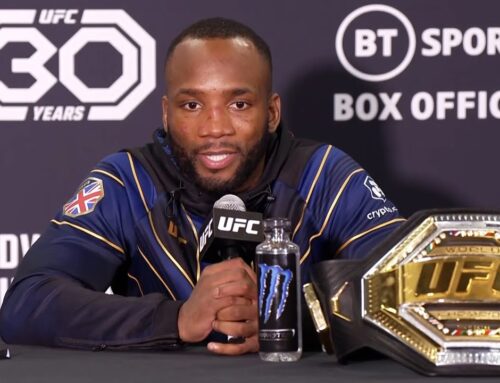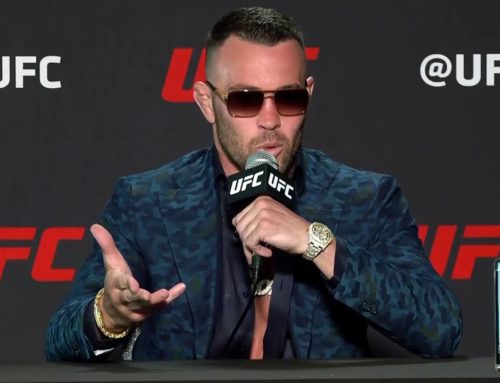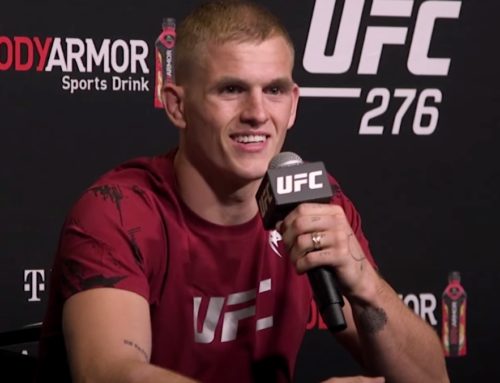Once connected solely by the action of throwing punches at an opponent, boxers and mixed martial artists are now, in 2017, bound by a term which serves to simultaneously explain the motives of all who frequent a ring or a cage: prizefighting.
It’s a term centuries old, of course, but today, in a time when pay-per-view has a big say not only on the wealth of a fighter but the health of an industry, it has been reintroduced to combat sport vernacular and adopted by boxers and mixed martial artists looking to blur the lines and unite in the name of a common goal: namely, making obscene amounts of money.
I’m looking at you, Floyd. And you, Conor.
While fights between two boxers make sense and fights between two mixed martial artists make sense, history dictates that fights between a boxer and a mixed martial artist are just nonsense. That said, recent history also suggests knowing what’s right and wrong won’t stop a boxer and a mixed martial artist getting together, dropping their labels and heritage and rebranding themselves as face-punchers and prizefighters if doing so stands to make them a ton of money. In fact, it’s now the done thing; the latest trend; the move of men who feel they’ve sussed the game; the move of men who feel they are better than the game.
Prizefighters, at this rate, will soon be the richest face-punchers on the planet. Not boxers, not mixed martial artists, prizefighters; men and women who capitalise financially on their name, marketability and ability to sell a fight – any old fight. Soon punching people in the face – the commonality between most combat sports – will act as the gateway to making life-changing amounts of cash. Forget the differences, ignore the separate codes, boxing and mixed martial arts can be condensed and simplified for the masses so long as it secures the attention, interest and money of those it intends to dupe.
This isn’t the fight game. It’s the fame game. And prizefighters in 2017 come no more famous than Floyd Mayweather and Conor McGregor. One’s a boxer, the other a mixed martial artist, but such detail is insignificant in the eyes of the intended audience. To them, the general public, those who care little for the rules or integrity of combat sports, these men, Floyd and Conor, are merely famous people who boast about their ability to punch people in the face and then actually get in a ring or cage and do just that: punch people in the face. That’s it. You talk, you punch, you get rich, you flaunt it. It’s prizefighting.
Prizefighting, this unsightly and occasionally desperate art, strips two disciplines – the sweet science and the martial arts – of their purity, uniqueness and history and serves only to confuse and complicate sports already tough to understand for all but those who consider themselves hardcore fans. It makes a mockery of titles and rankings and anything else once considered prestigious or worth having.
Case in point: when Jimi Manuwa secures a third straight UFC win with a first-round knockout in London only to then grab the microphone and call out boxer David Haye, you know there’s a problem, a glitch in the matrix. You realise then we’ve gone too far.
Inspired no doubt by the fanciful figures attached to the aforementioned Floyd and Conor ‘dream fight’, Manuwa’s decision to pursue Haye rather than, you know, actively seek a fight with a fellow UFC light-heavyweight, was the depressing tipping point in the boxer vs. mixed martial artist shenanigans. It went beyond Floyd and Conor, two larger-than-life global superstars, and represented, instead, a top-ten ranked UFC fighter calling out a top-ten ranked boxer to have a prizefight for which there is absolutely zero interest or demand.
That’s when it gets just downright sad and weird.
***
Sad and weird is perhaps the best way of describing the sight of a roly-poly 42-year-old James Toney standing across the Octagon from Randy Couture seven years ago at UFC 118. It was August 2010 and Toney, the boxer, the great, legendary, expanding boxer, had in March signed a multi-fight deal to compete in the UFC as a mixed martial artist. Don’t laugh. It happened. It actually happened. The aim, as far we understood at the time, was to use his fists, his money-makers, to hit the face of a mixed martial artist, the more famous the better, and thus expose the fragility of those who chose to wrestle and grapple over standing and banging. He was, in more ignorant times, carrying the hope of boxing on his shoulders; show ’em, James; boxers are real fighters; boxers punch harder than mixed martial artists.
The thing is, Toney wasn’t boxing. He wasn’t even mixed martial art-ing. He was prizefighting. Down on his luck and desperate, the James Toney of 2010, when 42 years of age and no longer anywhere near the heavyweight – yes, heavyweight – title picture, was not the James Toney of 1993. This was a man in need of a reinvention, one who’d emptied the fancy dress box as a middleweight, super-middleweight, light-heavyweight, cruiserweight and heavyweight; as a weight-drained puncher and an overweight slickster. The only option left for Toney, therefore, was to cash-out as a prizefighter.
“You’re scared to come into my house, so I’m coming to yours,” he warned Couture.
A statement Conoresque in its arrogance and ambition, Toney had never been short on either. It was what allowed him to contemplate such a move in the first place, having never before so much as grappled, let alone trained mixed martial arts, and it was what led some to believe he might even have a chance of walking Couture on to something big in round one and proving right all who claimed mixed martial artist and specifically wrestlers lived in fear of copping a hard shot around the chops.
“All Toney possesses in this fight is pure punch power and technique, and I have no doubt in mind Toney will enter the UFC as the greatest puncher the sport of mixed martial arts has ever seen,” said David Haye, then the WBA heavyweight champion, in the days leading up to the hybrid fight. “His hands are better than anyone else’s in mixed martial arts and it goes without saying he’ll cause immense damage if he lands something clean on anyone, Couture included. If Couture chooses to stand with Toney, he’ll be foolish and quickly knocked out.”
Haye, unlike Toney, was familiar with the unusual sensation of being taken down and chucked on his back. Only ever a mess-around, he had done some jiu-jitsu and grappling training at Piccadilly Circus’s Third Space gymnasium and had, since that day, expressed a newfound respect the way of anybody who called themselves a mixed martial artist. He knew pretty quickly it wasn’t the sport for him, despite a penchant for punching people in the face and a non-discriminatory love of combat. What he lacked, I suppose, was Toney’s delusion. Moreover, what he lacked, especially back then, when on top and riding high, was Toney’s desperation and need to rediscover some sort of relevance.
“I was a lot worse than I thought I would be at MMA,” Haye told me. “It was a completely new experience. The small gloves are actually a disadvantage because boxers are used to bandaging their hands and having bigger gloves. Also, when someone’s trying to take you down, they only offer the top of their head to hit, so it’s very difficult to nail someone on the chin unless you throw an uppercut.
“If you’re hitting away at the top of someone’s head with those tiny gloves, the likelihood is you’re going to severely damage your hand. That means you’re then going to have to take the power out of your shot. I used to practice with 18-ounce gloves so I wouldn’t smash my hands to bits and hurt the other guys.
“A traditional boxer can’t get off with the same punches he’d be able to throw in a boxing match. You have to consider getting hit with fists, legs and takedowns. Balance-wise, and in terms of leverage, the two styles of punching are completely different. In MMA you’re always moving and changing angles to avoid shots, clinches or takedowns. That automatically takes away the balance and the moment to set you’d need as a boxer.
“Unless you adapt to the kind of stand-up needed in MMA, you’ll get taken down as soon as you set your feet to throw a big shot. This means a boxer wouldn’t be as effective, punching-wise, in an MMA contest as he would in a boxing ring. A lot of boxers don’t realise that and think they can just turn up and bomb the MMA guy out. While there’s always the chance of that happening, it’s only a slim one.”
To use Haye’s parlance, James Toney figured he’d turn up and bomb Randy Couture out. Never doubted it for a second. Not even when presumably taken down at will by sparring partners in preparation – assuming such a thing even existed – for the fight. Not even when stood opposite Couture on fight night in a damn cage rather than a boxing ring surrounded by thousands upon thousands of people eager to witness a demolition job, a freak-show, a beat-down of a boxing braggart who dared insult their sport.
But this was old-school boxing versus MMA. This was a fat and faded boxer with no intention of competing in MMA full-time going up against a mixed martial artist who cared only about pointing out the myriad differences between the two disciplines and doing so quickly and clinically. “He better hope he can catch me and land that shot and knock me out,” said Couture. “I don’t care about knocking him out. I just want to beat his ass.”
Unfortunately for Toney, he chose the wrong guy. He hand-picked a guy in Couture who wouldn’t let the hype and nonsense of the spectacle – what happens when a boxer connects on the chin of a mixed martial artist? – cloud his greater need to swerve potential embarrassment and actually beat the man in front of him.
Spoilsport.
Haye, a big ‘Lights Out’ fan, waited up all night to see Toney land The Boxer’s Punch, as did many from the boxing fraternity (though, granted, few will admit it today), but was ultimately left disappointed if not surprised.
“I fear for Toney in mixed martial arts,” Haye said beforehand. “I don’t see how he can learn a completely new sport at 42 years of age and defeat one of the founding members. Couture is a veteran of the game and knows exactly what he has to do to win this fight. He knows he cannot stand with Toney for even a second, but he’s a master at securing takedowns and should have little difficult dragging Toney to the floor.
“Toney was never the most mobile or fleet-footed boxer in the world, so there’s a good chance Couture will be shooting for takedowns against a static target. That’s bad news for Toney. Once Toney is thrown to the floor, it’s a wrap. He’ll just curl up and allow Couture to do whatever he wants.”
Contrary to this forecast, Couture did stand with Toney for a second. Fifteen of them, in fact. During this time – the only period in which Toney appeared remotely dangerous (a term used loosely) – the boxer shuffled his flat feet to the centre of the Octagon, made for the blue Bud Light logo, and used one hand, his right, to almost steady his jiggling breast, while his left, his jabbing hand, was slung somewhere around his midriff. For Toney, it was near-enough the same look and stance he adopted when boxing Hasim Rahman for the WBC heavyweight title in 2006 and when boxing John Ruiz for the WBA heavyweight title in 2005 and when boxing Vassiliy Jirov for the IBF cruiserweight title in 2003. You get my point. James Toney, mixed martial artist, came out boxing. Shuckin’ and jivin’. Getting ready to shoulder-roll. Preparing the pull-counter. “It’s bullshit,” Toney said. “When I hit somebody on the chin, it’s over.”
He had fifteen seconds to achieve this, but failed. In reality, Couture did the very thing he trained to do – shoot in with a single-leg takedown on a flat-footed fat man – and James Toney wouldn’t be seen on his feet again until being brought back to them at the end of the fight. The Boxer’s Punch – the elusive, mystical thing on which this whole forgettable charade hinged – was never even thrown.
“For as long as I’ve been involved in this sport, we’ve been compared to boxing,” said Couture, pre-fight. “We’ve had plenty of boxers run their mouths about how terrible we are at striking and how they’d knock us all out.
“I think James is just that cocky and that arrogant that he thinks he’s going to stroll in there purely as a boxer and get the job done. But boxing is still only a small part of what we do as mixed martial artists. There are some serious holes in his game and it’s my job to point those out.”
As jobs go, perhaps the only job easier than single-legging James Toney in the Octagon is being a UFC ambassador in retirement. Shot executed with embarrassing ease, Couture didn’t even have to power through and complete the takedown. Toney was already heading south. Nor did Couture have to pass his guard or fight for position. Toney had already acquiesced and given him full mount.
Twenty seconds had elapsed and James Toney, boxing’s designated soldier, was gripping Randy Couture’s mid-section the way a traumatised mother holds a child who has been lost and then found. It was a hug in every sense of the word. Hands locked, grip tight, he wanted to stay there, beneath Couture, in this relative comfort zone, all the while a ground-and-pound attack was being conducted on his boulder-like head. It was, I suspect, preferable to bucking his hips and trying to escape. That would take effort.
“UFC! UFC! UFC!” went the sound of 14,000 fans packed inside Boston’s TD Garden that night, every one of whom had come to witness what they were now witnessing. Boxing on its back, MMA on top. For them, this was beautiful, akin to winning an argument with a partner, hearing an apology and then being told you were right all along. It was validation in the form of a pathetic takedown and an even more pathetic attempt to defend against an arm-triangle. It was the silencing of a loud mouth; look at the fear on Toney’s face; watch his fat ass squirm; come on, Captain America! MMA advocates couldn’t get enough of it. They wanted this beating prolonged, for more punches to land, for more points to be made.
“It doesn’t look like anybody taught him how to defend this,” said UFC commentator Joe Rogan, fearing for Toney as he settled into a Couture arm-triangle. “He’s going to go to sleep here.”
To his credit, Toney didn’t. He signalled to the referee he was okay, shit-talked Couture from a position of peril, as is his custom, and then sought to win the only battle now up for winning: the battle of survival.
“He’s giving!” shouted Couture, adamant Toney had quit. “He says he gives!”
Toney disputed this with a further stream of shit-talk and now they were talking, the two of them, bargaining almost. “Just quit, damn it,” Couture probably wanted to say through gritted teeth. “Let’s end this freak show.”
It took three minutes and nineteen seconds in total. A second arm triangle, this time deeper than the first, this time finished with Couture moving out of mount and towards Toney’s left side, sealed the deal. A win for Couture, a win, they said, for MMA.
More chants of “UFC! UFC! UFC!” could be heard, like it all meant something.
“What we learned in UFC 1,” said Joe Rogan, “is still applied in UFC 118.”
Again, like it actually meant something.
***
Clearly, like a one-night stand, it meant nothing. If it did, we wouldn’t be here now, seven years later, bracing ourselves for a card of prizefighting which could potentially feature a number of boxers versus mixed martial artists, topped by the obnoxious cock-swinging contest between Floyd Mayweather and Conor McGregor.
But we are here. It might actually happen. We might actually see Conor McGregor make his professional boxing debut against the greatest boxer of the modern era in a boxing ring somewhere along the Las Vegas strip. This could soon become our reality, albeit a distorted one, the start of something not big and definitely not clever.
They pretend like we don’t know any better. Like it’s never been done before. It’s an approach they use in order to disguise the real reasons behind so-called fascinating prizefights like Mayweather vs. McGregor and Haye vs. Manuwa taking place. Put the emphasis on the intrigue, spin it as once-in-a-lifetime and forget everything else. Deny everything else. Tell the world they are the ones demanding it. Better yet, go a step further. Tell them what it is they want.
“We have heard from Manuwa’s management and the UFC and it is something we are looking at,” said Haye, now 36 and without a boxing title, during a recent online Q&A. “Obviously it is a little way off being confirmed, but it is a fight that would unify a lot of the fans from both UFC and boxing and make a mega event.”
Just as prizefighting is now code for boxing and mixed martial arts, the term event or mega event is code for a fight with little worth or prestige. It is this way in boxing just as it occasionally is in MMA. It’s a disclaimer of sorts. A way of saying even if the fight itself sucks or is void of any real importance, it will at least represent some kind of spectacle, happening or just a plain old night out.
Jimi Manuwa, a fighter on the cusp of a shot at the UFC light-heavyweight title, is also hip to the value of an event and knows its value could at the very least be equal to that of a fight against the best mixed martial artist in his weight class. Hence, “I’ll come to his world,” Manuwa, 37, said on The MMA Hour. “We’ll do boxing. We’re two big names in London. Why not?”
In the interests of fairness and decency and, I don’t know, the truth, it’s worth noting Manuwa, unlike McGregor, does not even have a single amateur boxing match to his name. It says everything, then, that he’s willing to momentarily abandon a flourishing MMA career in search of a prizefight in a boxing ring against someone who has been boxing since the age of ten.
“Haye won’t last in MMA because I’ll take him down and smash him,” Manuwa said. “I’ll come to his world. It’s a big money fight in London, we’ll sell out the O2 (Arena) and that’ll make sense. We can go to Vegas (too). We can go on the McGregor undercard. I heard Roy Jones wants to fight Anderson Silva as well. This is picking up momentum. Let’s do this.”
Roy Jones Jr. is 48 years age. Anderson Silva is 41. To use their names as symbols of any kind of momentum or progress is to surely do a disservice to all the other boxers and mixed martial artists, many of whom would have been inspired by Jones and Silva, attempting to make headway and genuinely gain momentum and progress; you know, men and women still partaking in The Fight Game as opposed to The Fame Game; men and women still ambitious and goal-driven; mixed martial artists who actually want to become champions; boxers who actually want to become champions.
“We’re warriors,” said Manuwa. “We’ll go to their turf. We’re the toughest, hardest-working athletes in the world. We fear no one. We’ll come to boxing and do their thing. We do boxing. They don’t do MMA. They’re scared to do MMA.”
The danger of crossbreeding: for two sports that have battled the misconceptions of the general public by revealing the complexities and positive traits of fights and fighters, an unhealthy desire for the mega event could inadvertently shatter the precious foundations on which two sports – very different sports – were first built.
Oh well. It’s all just punching people in the face, right?

